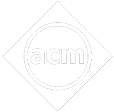- Written By
Shalini Kaveripakam
- Last Modified 26-01-2023
Oxygen: Formula, Preparation, Properties, Importance
Oxygen Formula: Oxygen is a vital component of the atmosphere and we cannot survive without it. It is essential to understand how atmospheric oxygen is produced. A large number of mechanisms help the oxygen level in the atmosphere. Oxygen first comes from all over the universe on Earth as meteorites.
Plants also contribute to the release into the atmosphere of oxygen during the photosynthesis process, which we then use for the breathing process. Water electrolysis can be used in laboratories to synthesise it. This article discusses formula, preparedness and oxygen properties.
Learn Everything About Oxygen
Oxygen is a chemical element with an atomic number \(8\) and the symbol \({\rm{O}}.\) It is a highly reactive non-metal and an oxidising agent that rapidly produces oxides with most elements and other compounds. It belongs to the chalcogen group in the periodic table.
\({{\rm{O}}_2}\) commonly known as dioxygen, is the chemical formula for oxygen. This formula is given because oxygen forms typically a covalent bond with another oxygen atom. It requires two electrons to complete its octet, which it may easily obtain from another oxygen atom, hence it is diatomic. Oxygen is electronegative, which means it is highly reactive.
The structural formula of oxygen is given below
Importance of Oxygen
Oxygen is one of the constituents of air. Oxygen is present in the air in its elemental form. It occupies one-fifth of the volume in the air. Water contains dissolved oxygen. This is used for respiration by species like fish living in the water. Oxygen is present in a combined state in water, minerals, plants and animals.
The Swedish chemist K. W. Scheele \((1742 – 86)\) first prepared oxygen in \(1771\) by heating mercuric oxide. Priestley also prepared this gas by heating red oxide of mercury and other substances. Later Lavoisier, the French scientist, studied its properties and gave it the name oxygen, which means acid producer. He recognised oxygen as an element. Laboratory preparation of oxygen can be obtained from a number of compounds such as potassium permanganate, potassium chlorate, hydrogen peroxide and mercuric oxide. The compounds decompose on heating and liberate oxygen gas:
\(2{\rm{HgO}}\, \to \,\,2{\rm{Hg}}\,{\rm{ + }}\,{{\rm{O}}_2} \uparrow \)
\(2{\rm{KCl}}{{\rm{O}}_3}\, \to \,\,2{\rm{KCl}}\,{\rm{ + }}\,3{{\rm{O}}_2}\)
Preparation of Oxygen From Hydrogen Peroxide
Hydrogen peroxide is commonly used for dressing wounds and cuts. Solution of hydrogen peroxide easily decomposes on heating and gives oxygen. Decomposition of hydrogen peroxide can be brought about quickly (without heating) by using a small quantity of manganese dioxide which acts as a catalyst.
Catalyst is a substance that alters (increases or decreases) the rate (speed) of a chemical reaction without undergoing any permanent chemical change by itself.
Experiment
The apparatus can be set up as shown in the figure. Take some manganese dioxide in a conical flask and add water to it. Hydrogen peroxide is added from the dropping funnel dropwise.
Manganese dioxide(catalyst) decomposes hydrogen peroxide and liberates oxygen which can be collected into the jar by downward displacement of water.
Method of Collection of Oxygen
A gas jar full of water is inverted over the beehive oxygen collects in the jar by displacing water downwards. When the jar is full of oxygen, slide a greased glass plate on its mouth underwater and take out the jar. A few jars of oxygen collected in this way are used to study its properties.
Properties of Oxygen
The properties of oxygen are explained below:
Physical Properties of Oxygen
- Observe the colour and smell of the gas collected in the jar. Does it have any colour or smell? We find that oxygen is a colourless, tasteless and odourless gas.
- It is slightly heavier than air.
- Oxygen is slightly soluble in water. Aquatic plants and animals can live in water because of this property.
- It is neutral to litmus; it does not affect wet litmus paper.
Chemical Properties of Oxygen
Action with Carbon
Place a pinch of charcoal on a deflagrating spoon. Heat it to red hot. When the charcoal starts glowing, introduce it into a gas jar of oxygen. Charcoal burns more vigorously and brightly in oxygen, liberating carbon dioxide and heat.
\({\rm{C}} + {{\rm{O}}_2}\, \to \,{\rm{C}}{{\rm{O}}_2}\, \uparrow \, + \,{\rm{heat}}\)
Add a little lime water to the jar and shake. It becomes milky (test for carbon dioxide).
Action with Sulphur
When burning sulphur (in a deflagrating spoon) is introduced into the jar of oxygen it burns with beautiful blue flame forming a mixture of sulphur dioxide and sulphur trioxide.
\({\rm{S}} + {{\rm{O}}_2}\, \to \,{\rm{S}}{{\rm{O}}_2}\, \uparrow \, + \,{\rm{heat}}\)
\({\rm{2S}} + 3{{\rm{O}}_2}\, \to \,2{\rm{S}}{{\rm{O}}_3}\, \uparrow \, + \,{\rm{heat}}\)
In a similar way, introduce burning magnesium and sodium into jars of oxygen gas. Magnesium burns brightly, forming magnesium oxide. Sodium also burns brightly with a golden yellow flame to form its oxide and peroxide. Heat will be liberated in both cases.
\({\rm{2Mg}} + {{\rm{O}}_2}\, \to \,2{\rm{MgO}}\,\, + \,{\rm{heat}}\)
\({\rm{4Na}}\,{\rm{ + }}\,{{\rm{O}}_2} \to 2{\rm{N}}{{\rm{a}}_2}{\rm{O}}\,{\rm{ + }}\,{\rm{heat}}\)
\({\rm{2Na}}\,{\rm{ + }}{{\rm{O}}_2} \to {\rm{N}}{{\rm{a}}_2}{{\rm{O}}_2}\)
Thus, we see that burning of substances is more vigorous in oxygen than in this air. This shows that oxygen is a very reactive substance.
Iron reacts with oxygen in the presence of moisture, giving rise to rust. The product is a mixture of several oxides of iron. Rusting is prevented by coating iron with suitable Paints.
Oxides
Oxygen reacts with metals (i.e. \({\rm{Na,}}\,{\rm{Mg}}\)) and forms metallic oxides. It also reacts with the non-metals \(({\rm{i}}{\rm{.e}}{\rm{.}}\,{\rm{P,}}\,{\rm{S,}}\,{\rm{C)}}\) and forms non-metallic oxides.
Acidic Oxides
Observation: When a piece of blue litmus paper is placed in the jar in which sulphur has been burnt, it turns red.
\({\rm{S}} + {{\rm{O}}_2} \to {\rm{S}}{{\rm{O}}_2} \uparrow \)
\({\rm{S}}{{\rm{O}}_2} \to {{\rm{H}}_2}{\rm{O}} \to {{\rm{H}}_2}{\rm{S}}{{\rm{O}}_3}\)
Similarly, when a blue litmus is introduced into the jar of oxide of phosphorus turns red.
\({{\rm{P}}_4} \to {\rm{5}}{{\rm{O}}_2} \to 2{{\rm{P}}_2}{{\rm{O}}_5}\)
\({{\rm{P}}_2}{{\rm{O}}_5} + \,3{{\rm{H}}_2}{\rm{O}} \to {\rm{2}}{{\rm{H}}_3}{\rm{P}}{{\rm{O}}_4}\)
Thus, oxides of carbon, sulphur, phosphorus react with water to form acids which turn blue litmus to red. These are called acidic oxides.
Basic Oxides
Unlike oxides of non-metals, the oxides of magnesium, sodium, calcium and other metals are solids. When they react with water, the resultant solution turns red litmus blue. Such oxides are called basic oxides.
\(2{\rm{Ca}}\,{\rm{ + }}\,{{\rm{O}}_2} \to \,2{\rm{CaO}}\)
\({\rm{CaO}}{\mkern 1mu} {\rm{ + }}{\mkern 1mu} {{\rm{H}}_2}{\rm{O}} \to {\mkern 1mu} {\rm{Ca}}{\mkern 1mu} {\left( {{\rm{OH}}} \right)_2}\)
\(2{\rm{Mg}}\,{\rm{ + }}\,{{\rm{O}}_2} \to \,2{\rm{MgO}}\)
Uses of Oxygen
Support for Life (for breathing and burning)
Oxygen is an essential element to sustain life. It maintains plant and animal life through respiration.
Oxygen in the atmosphere is used for breathing- Artificial respiration is resorted to only when there is not sufficient supply of oxygen, in air, such as at higher altitudes; during firefighting; under sea or in space. Thus, oxygen is used for artificial respiration by
- Fireman during firefighting
- Aviators during higher altitude flying
- Astronauts in space ships
- Divers and submariners underwater
- Miners during deep mining
- Climbers during high altitude climbing
Further, oxygen in the air is used in the burning of fuels which release high amounts of heat for running the vehicles and machines in the industry.
Oxyacetylene and Oxyhydrogen Flame
Oxygen is used in the production of oxyhydrogen \(\left( {2400\,^\circ {\rm{C}}} \right)\) and oxygen-acetylene \(\left( {3200\,^\circ {\rm{C}}} \right)\) flames. The intense localised heating by these flames helps in cutting metals and in welding the pieces of metals together.
Oxygen is also used medically for illnesses wherein lungs are not working to capacity. Example: Asthma, pneumonia, carbon monoxide poisoning, etc. The patient is put on an oxygen tent where oxygen is fed from cylinders.
Summary
The element oxygen is the most abundant on the planet. The symbol for it is \({\rm{O}}\) and it belongs to the chalcogen group of the periodic table. It is a necessary gas for life to exist. Oxygen is used in various industries, including laboratories and hospitals. This article learned about the chemical formula and structure of oxygen, preparation of oxygen, physical properties of oxygen, chemical properties of oxygen, acidic oxides, basic oxides, and some uses of oxygen.
Let’s look at some of the commonly asked questions about oxygen:
Q.1. Is oxygen \({{\rm{O}}_2}\) or just \({\rm{O}}\)?
Ans: The distinction between oxygen \(({\rm{O}})\) and oxygen \(({{\rm{O}}_2})\) is that the former is an oxygen atom, whereas the latter is a molecule made up of two \({\rm{O}}\) atoms bonded together. The most common form of oxygen is a diatomic gas. As a result, we refer to it as \({{\rm{O}}_2}\).
Q.2. What is the chemical formula for oxygen?
Ans: Every element or compound, the mixture has a definite chemical formula. The oxygen molecule is represented as \({{\rm{O}}_2}\) as its native state is di-atomic in nature.
Q.3. What is the chemical name of oxygen?
Ans: Oxygen is a chemical element with atomic number \(8\). The chemical name of oxygen is dioxygen.
Q.4. Why is oxygen so special?
Ans: Oxygen has a paramagnetic property. Oxygen is weakly attracted to a magnetic field but does not keep its magnetism over time. Because water is made up of oxygen and hydrogen, oxygen makes up around \(2/3\) of the mass of the human body. In terms of mass, this makes oxygen the most abundant element in the human body.
Q.5. What are the main uses of oxygen?
Ans: Production of steel, rocket fuel, plastics, and textiles, welding, and cutting of steel and other metals, oxygen therapy, and life support systems in aircraft, submarines, spaceflight, and diving are all examples of uses of oxygen.
Q.6. Is oxygen matter Yes or no?
Ans: Yes, oxygen is a matter. All matter is made up of atoms. Anything that has mass and occupies space is called matter.
Study About Hydrogen Here
We hope this detailed article on the Oxygen formula is helpful to you. If you have any queries on the Oxygen formula, ping us through the comment section below and we will get back to you as soon as possible.










































